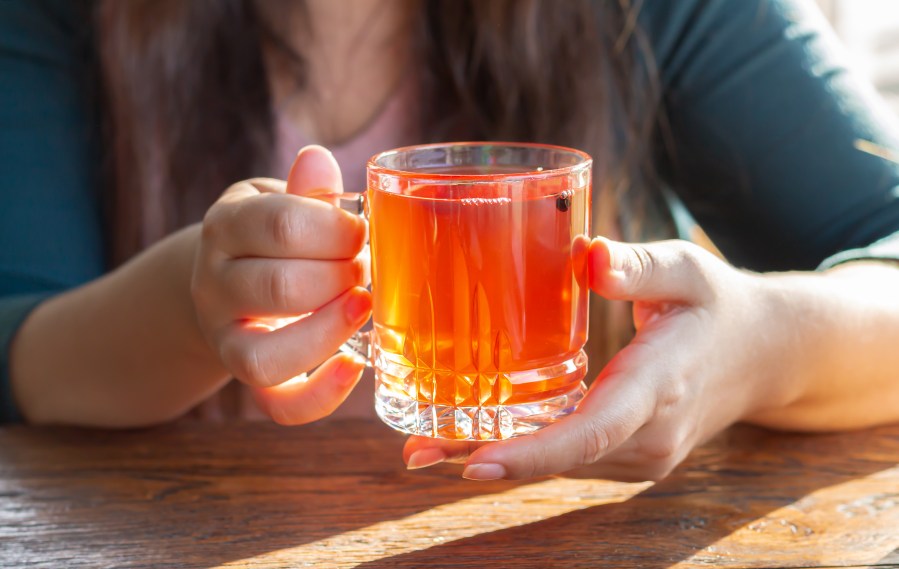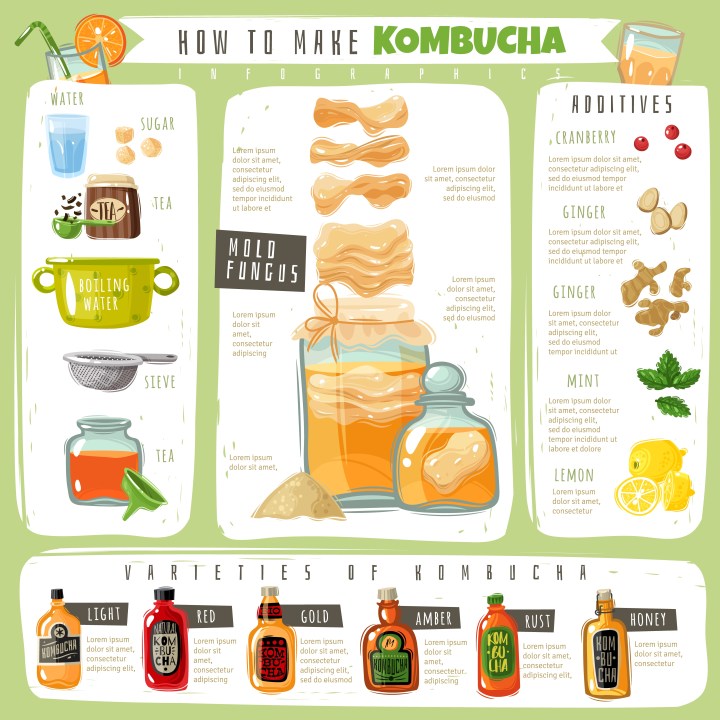Kombucha: The sparkling probiotic tea
Kombucha, a fermented tea drink, has been growing in popularity in recent years due to its reported health benefits. The drink is made by fermenting tea with sugar and a symbiotic culture of bacteria and yeast, commonly known as a SCOBY. The result is a tangy, slightly effervescent drink that is often flavored with fruits and herbs.
Origins
While the drink has been consumed for centuries in parts of Asia, its rise in popularity in Western countries can be attributed to its numerous health benefits.
Kombucha is a rich source of probiotics, which are beneficial bacteria that live in the gut and aid in digestion. Additionally, kombucha contains antioxidants, which help to protect the body against oxidative stress and inflammation.
Benefits

The drink has also been shown to have anti-microbial properties, which can help to fight off harmful bacteria and viruses in the body. Some studies have even suggested that kombucha may have anti-cancer properties, although more research is needed in this area.
Beyond its potential health benefits, kombucha is also a versatile drink that can be enjoyed in a variety of ways. It can be consumed on its own, mixed with juice or other beverages, or used as a mixer in cocktails. The drink is also a popular alternative to soda, as it offers a similar fizzy sensation without the added sugar and artificial ingredients.
How to make Kombucha

For those looking to make their own kombucha, the process is relatively simple. A SCOBY can be purchased online or obtained from a friend who brews their own kombucha. The SCOBY is then added to a mixture of brewed tea and sugar, and left to ferment for several days to several weeks, depending on the desired flavor and carbonation level.
Making kombucha at home is a simple process that requires just a few basic ingredients and equipment.
Here’s a brief overview of how to make kombucha:
- Prepare the tea: Start by brewing a pot of tea using black or green tea leaves, along with sugar and water. Allow the tea to cool to room temperature before moving on to the next step.
- Add the SCOBY: SCOBY stands for “symbiotic culture of bacteria and yeast,” and it’s what kickstarts the fermentation process in kombucha. You can either purchase a SCOBY online or get one from a friend who brews their own kombucha. Once you have your SCOBY, place it in a large glass jar or brewing vessel.
- Add starter liquid: Along with the SCOBY, you’ll also need to add some starter liquid to the jar. This can be leftover kombucha from a previous batch, or store-bought kombucha. The starter liquid helps to lower the pH of the tea, creating an environment that’s conducive to fermentation.
- Cover the jar: Cover the jar with a clean, breathable cloth, such as cheesecloth or a coffee filter. This will allow air to circulate while keeping out any debris or insects.
- Ferment the kombucha: Place the jar in a warm, dark place and allow the kombucha to ferment for 7-10 days. The longer you ferment it, the more tart and vinegary it will become. Taste it periodically to determine when it’s reached your desired level of sweetness and acidity.
- Bottle the kombucha: Once the kombucha is ready, carefully remove the SCOBY and set it aside for your next batch. Pour the kombucha into bottles, adding flavorings such as fruit, herbs, or spices if desired. Seal the bottles tightly and allow them to sit at room temperature for another 1-2 days to carbonate.
- Refrigerate and enjoy: Once the kombucha is carbonated, store the bottles in the refrigerator to halt the fermentation process. The kombucha will keep for several weeks, and you can enjoy it straight from the bottle or use it as a mixer in cocktails or mocktails.
Who should avoid Kombucha and why

While kombucha is generally considered safe for most people to consume, there are some precautions that should be taken. Those with compromised immune systems, pregnant or breastfeeding women, and individuals with certain medical conditions should consult with their doctor before consuming kombucha.
Additionally, homemade kombucha can be contaminated with harmful bacteria if not brewed properly, which can lead to illness. It is important to follow strict sanitary procedures when brewing your own kombucha, and to discard any batches that appear moldy or have an off odor.
Overall, kombucha is a refreshing and potentially beneficial drink that can be enjoyed in a variety of ways. Whether you choose to purchase it from a store or brew your own at home, it is important to consume kombucha in moderation and to take necessary precautions to ensure its safety.
In addition to its health benefits, kombucha has also gained a following among wellness enthusiasts for its reported ability to aid in weight loss and detoxification. While more research is needed in this area, some studies have suggested that kombucha may help to reduce inflammation and improve liver function, which can support overall health and wellbeing.
For those who are interested in incorporating kombucha into their diet, there are a variety of flavors and brands to choose from. Some popular flavors include ginger, raspberry, and blueberry, while some brands offer a variety of unique and seasonal flavors.
Kombucha is a versatile and potentially beneficial drink that can be enjoyed in a variety of ways. While more research is needed to fully understand its health benefits, it is clear that this fermented tea drink offers a rich source of probiotics, antioxidants, and other beneficial compounds. Whether you choose to purchase it from a store or brew your own at home, be sure to consume kombucha in moderation and to take necessary precautions to ensure its safety.







